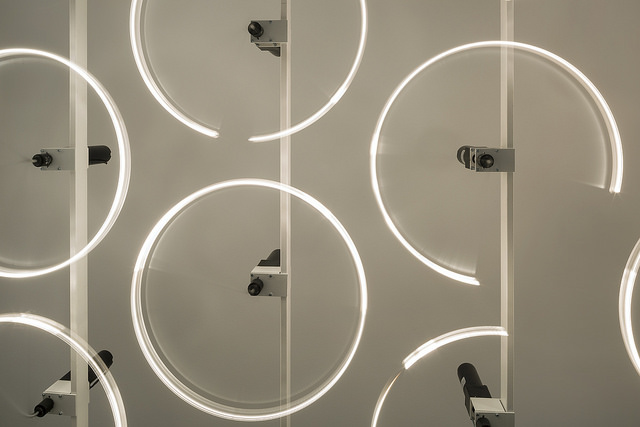
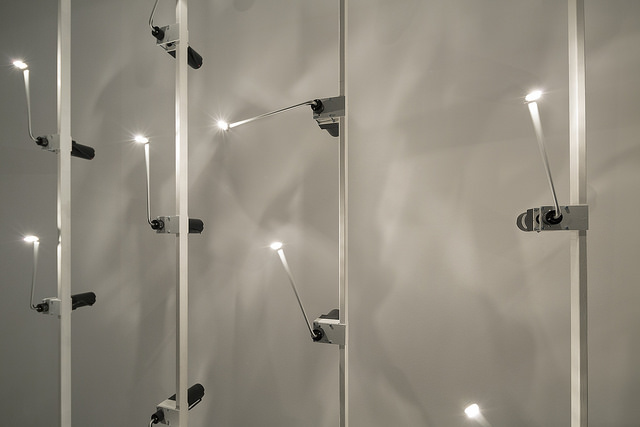


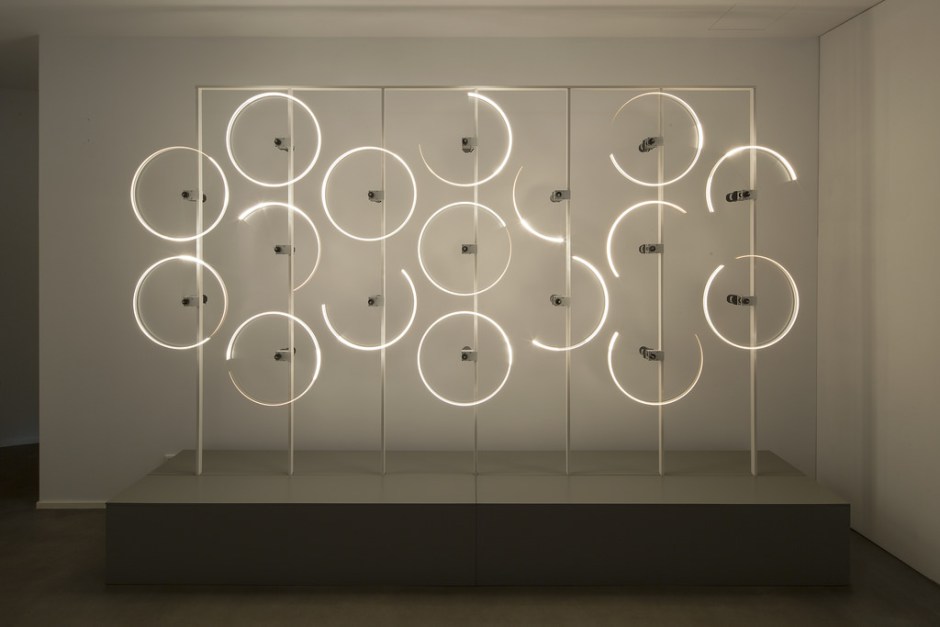
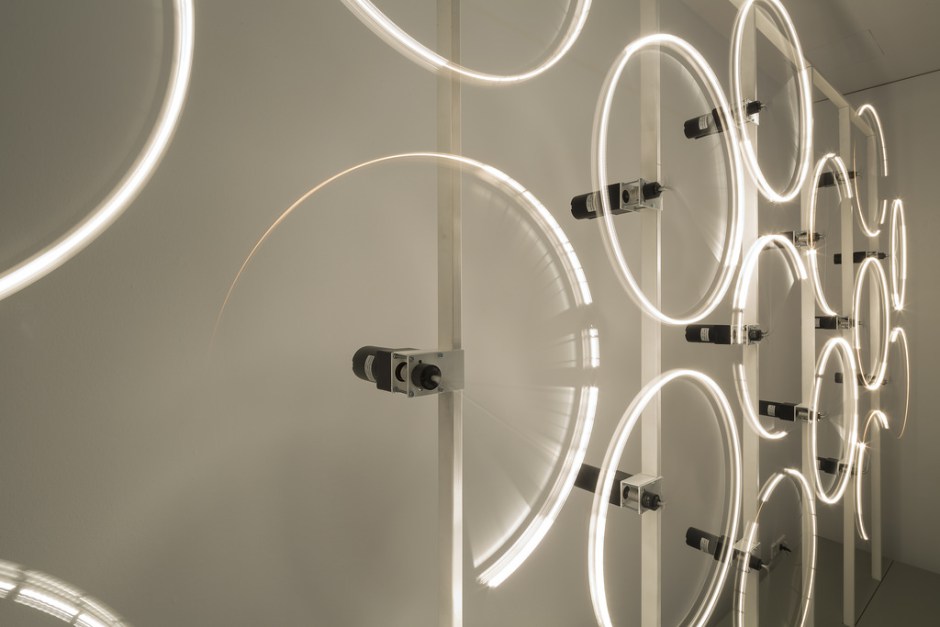
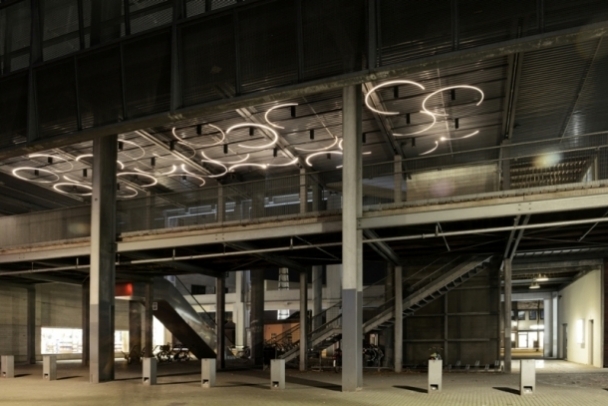
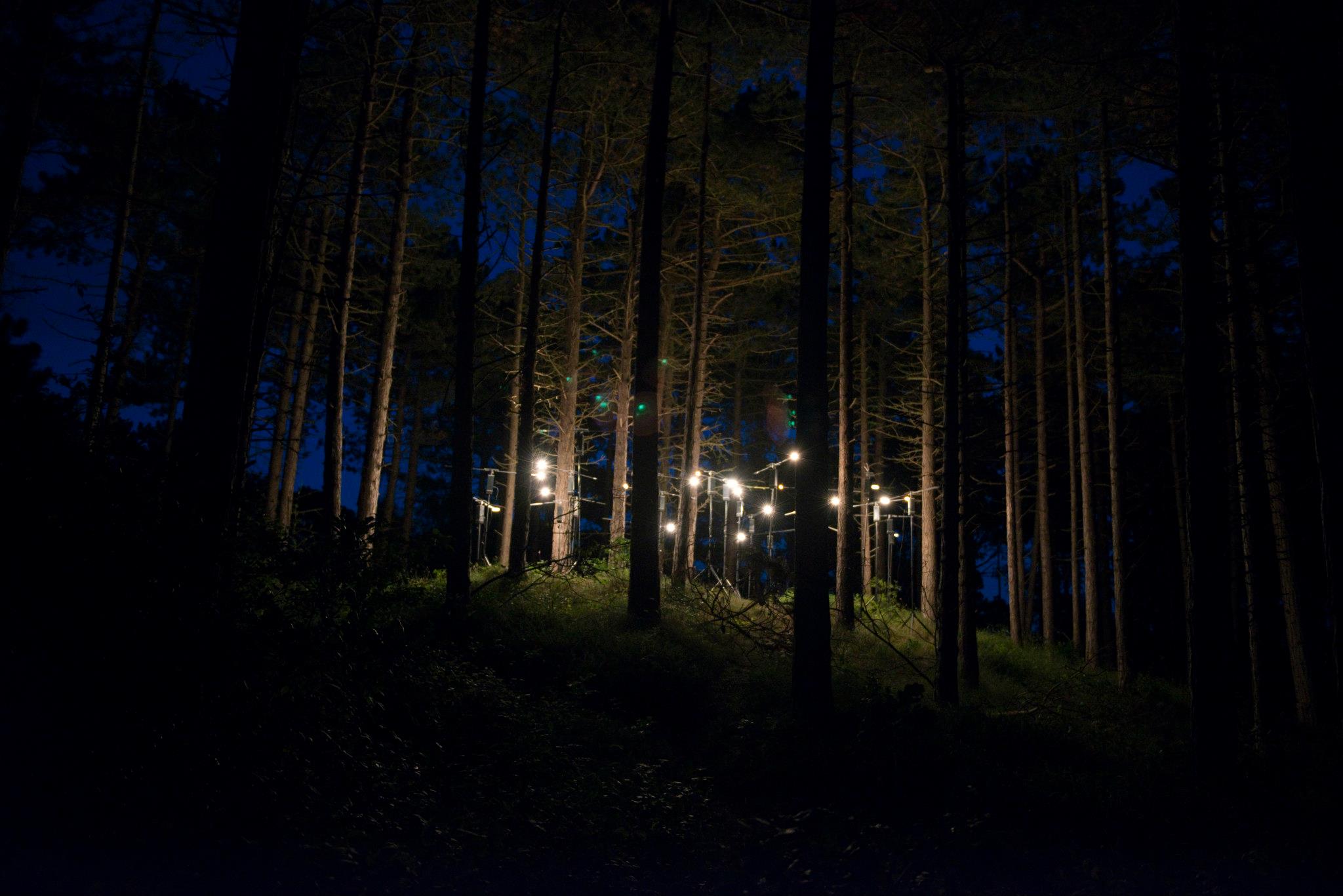
Homeostase [2016]
The installation Homeostase is the physical manifestation of a broader research into artificial life, cybernetics, and emergence. It is a kinetic sculpture in which a light-based communication system reveals itself to the audience. Multiple rotating arms are programmed to perform a generative choreography based on principles found in cellular automata and the rules underlying biological systems.
The work was first realized in 2012 as a modular system and exhibited at different locations in variable setups. This time, instead of having the units installed on the ceiling or on the ground as before, the installation is presented as a vertical plane in which the 17 generative motions of the rotating arms can be seen from the top. The arms hold a light and a light sensor and are programmed to move slower when an increase in light intensity is detected. The light cast by neighboring arms influences the speed at which an arm rotates. The result is a dynamic play of attraction and repulsion emerging from the swarm’s language of light.
The piece unfolds over time as the series of realtime feedback processes interact with each other to generate dynamic group behavior. The processes share some data through local interactions, but there is no central controller. At the basic level of the system’s architecture is a desire towards homeostasis which works as an inner compass for every unit within the network. At a higher level there is the interaction that occurs between the neighboring arms through the variation in luminance emitted by the lights and received by the light sensors.Homeostase possesses the qualities inherent in a self-regulating system such as those that can be found in almost all organisms on earth. Propelled by a negative feedback loop the system aims to maintain the perfect inner conditions to sustain life.
Homeostase is a commissioned work by NOME Gallery in Berlin for the Oscillations exhibition and is financially supported by Stichting Stokroos.